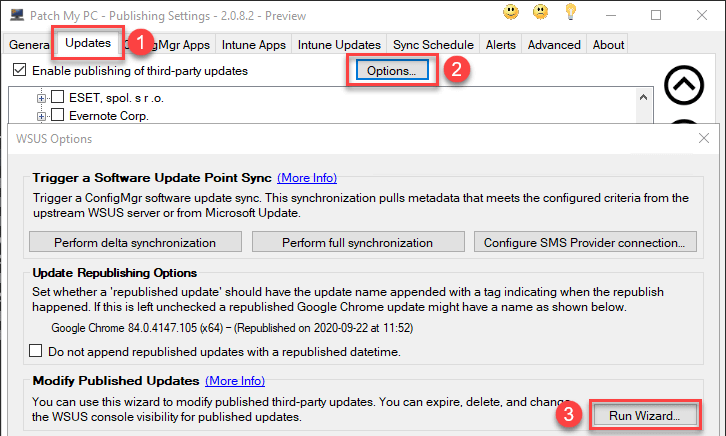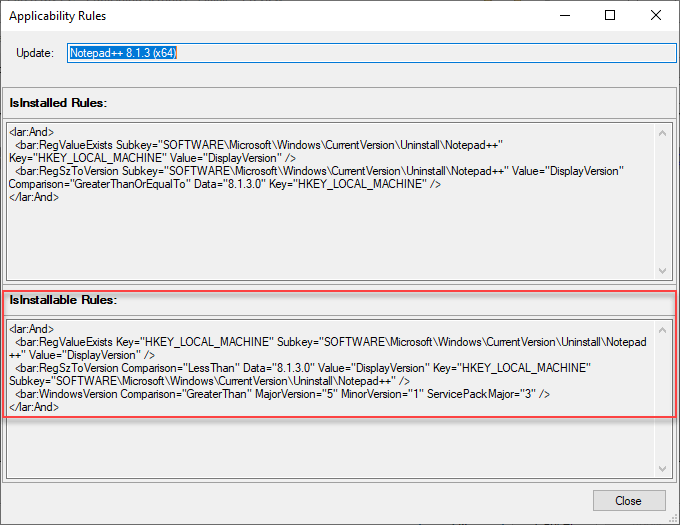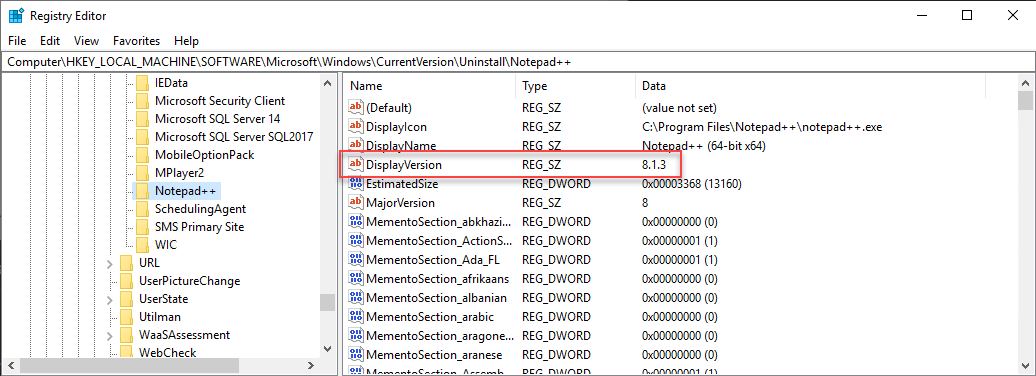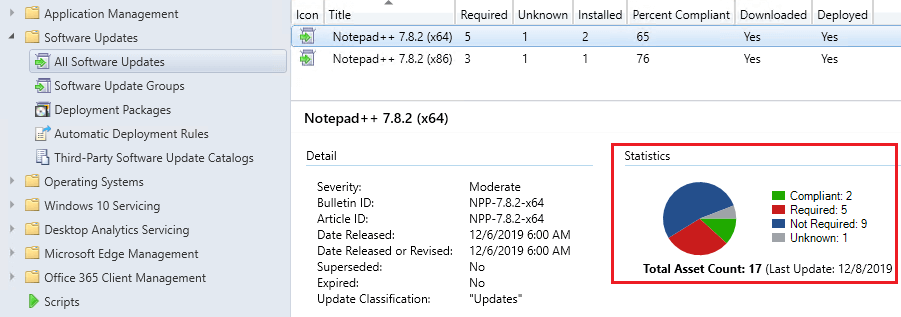
Viewing the applicability rules of a third-party update can help determine why an update does not appear in software center or install within SCCM.
This article looks at how the update applicability is determined for third-party updates within our catalog.
This guide will be helpful to determine why third-party software updates may not install on devices or report as required in Configuration Manager.

Step 1: Understand the Different Software Update States
Here’s a review of the states available for software updates within Configuration Manager and WSUS.
Compliant = The software update has been detected as being installed.
Required = The software update has been detected as being needed, but it hasn’t been reported as installed.
Not Required = The software update has been detected as not being applicable. This status is what we will be looking deeper into here.
Unknown = The software update hasn’t been evaluated yet on the client.
Step 2: Determine the Detection State of a Software Update on All Systems
When you are troubleshooting why a third-party software update isn’t appearing in software center or installing on a specific device or a large number of devices, the best first step is to click the update within the All Software Updates node and review what is the overall detection for all systems.
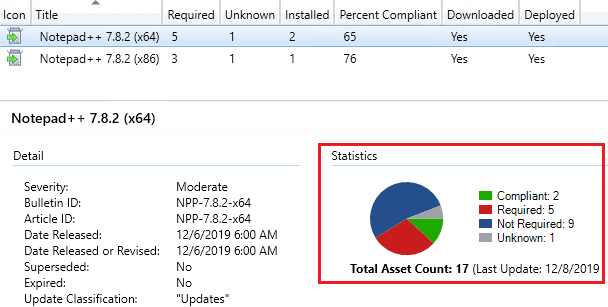
The overall detection results can be helpful in understanding if the detection seems incorrect for all systems or if only a few devices seem not to be detecting the update state correctly.
For example, if a large number of devices have an Unknown detection state, it’s likely an issue where the WSUS Administration IIS application pool is stopped, or the clients have a WSUS GPO conflict causing machines not to scan against the software update successfully.
Step 3: Determine the Detection State of a Software Update on a Specific Computer
If you are troubleshooting a specific computer not receiving a third-party update, run the following built-in report within Configuration Managers console under Monitoring > Reporting > Reports > Software Updates – A Compliance > Compliance 5 – Specific computer.
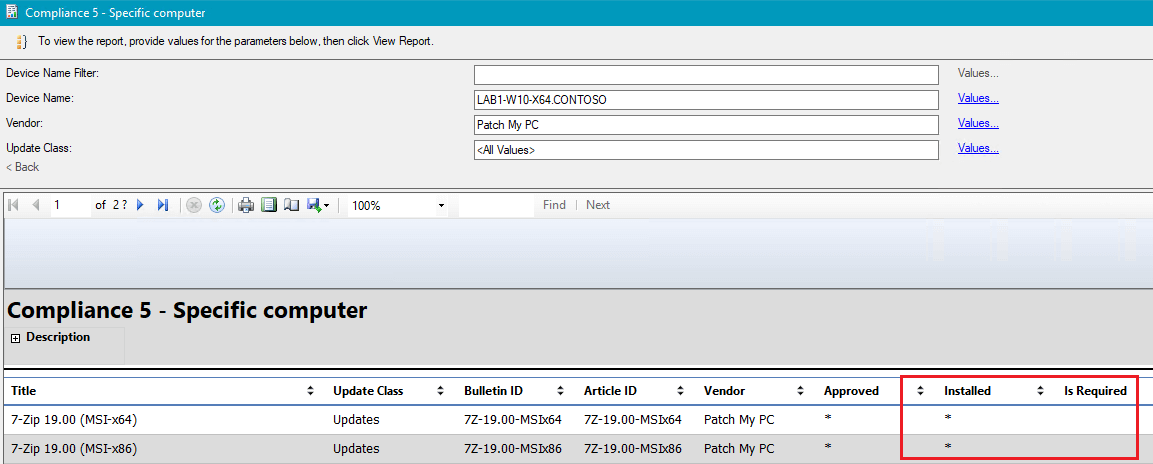
This report will allow you to review if the software update is detecting as Installed or Required on the specific computer in question.
Step 4: Determine the Detection State of a Software Update on a Device Collection
Next, you can expand the search to review the detect states on a specific collection of devices. For example, you could choose a collection where the software update has been deployed. From the Configuration Managers consol navigate to Monitoring > Reporting > Reports > Software Updates – A Compliance > Compliance 2 – Specific software update.

Review the different detection states for the specific software update in question.
Step 5: Check the Software Update Group’s Deployment Completion Statistics
If the detect state looks correct and the update(s) in question appear as required, the next step is to review the deployment completion statistics from the Deployments node of the console.
From the Configuration Managers console navigate to Monitoring > Deployments > Select the Software Update Group’s Deployment, and review the Completion Statistics chart.
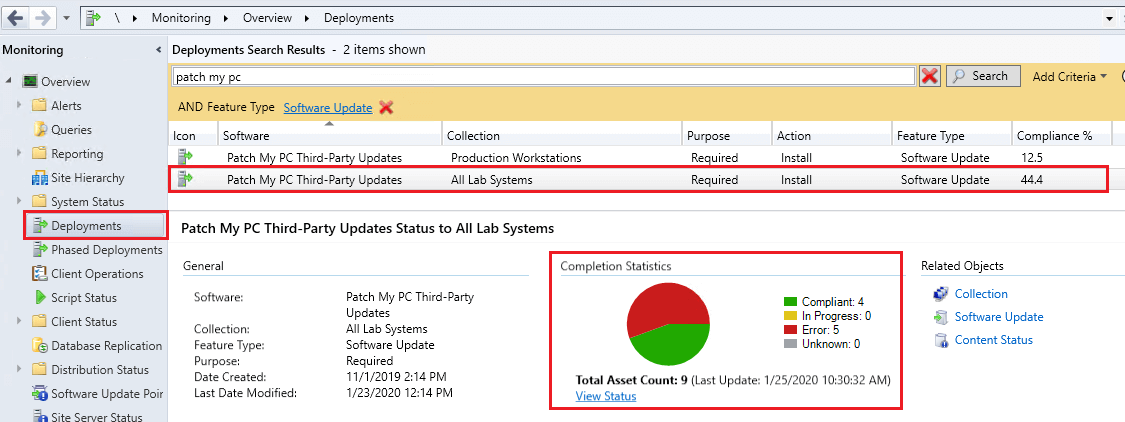
Review the different states that devices are in for the deployment. If you have a large number of devices in an In Progress or Failed state, this could explain why machines aren’t installing the software update. Click the View Status link below the chart to review a more detailed view of devices in specific states.

For example, if a large number of devices are in an In Progress state, it could be because the software update deployment package isn’t fully distributed or boundaries and boundary groups aren’t configured correctly for all clients.
Determining Software Update Applicability Rules when the State is Reporting Inaccurately
If the software update is detecting as Not Applicable on a device where it should (An older version of the product is installed), you can review the detection rules of the software update using one of the processes below.
Modify Updates Wizard
One way to get the applicability rules for the software update Notepad++ 8.1.3 (x64) is to launch the Modify Published Updates wizard in the Options menu of the Updates tab.
Select the update that isn’t being detected as Required and click Show Applicability Rules.
Show Package Info
Another way to view applicability rules for an update is by using the ‘Show package info…‘ right-click option. Once you have selected show package info from the right-click menu you can double-click on any given product listed and view the applicability rules.
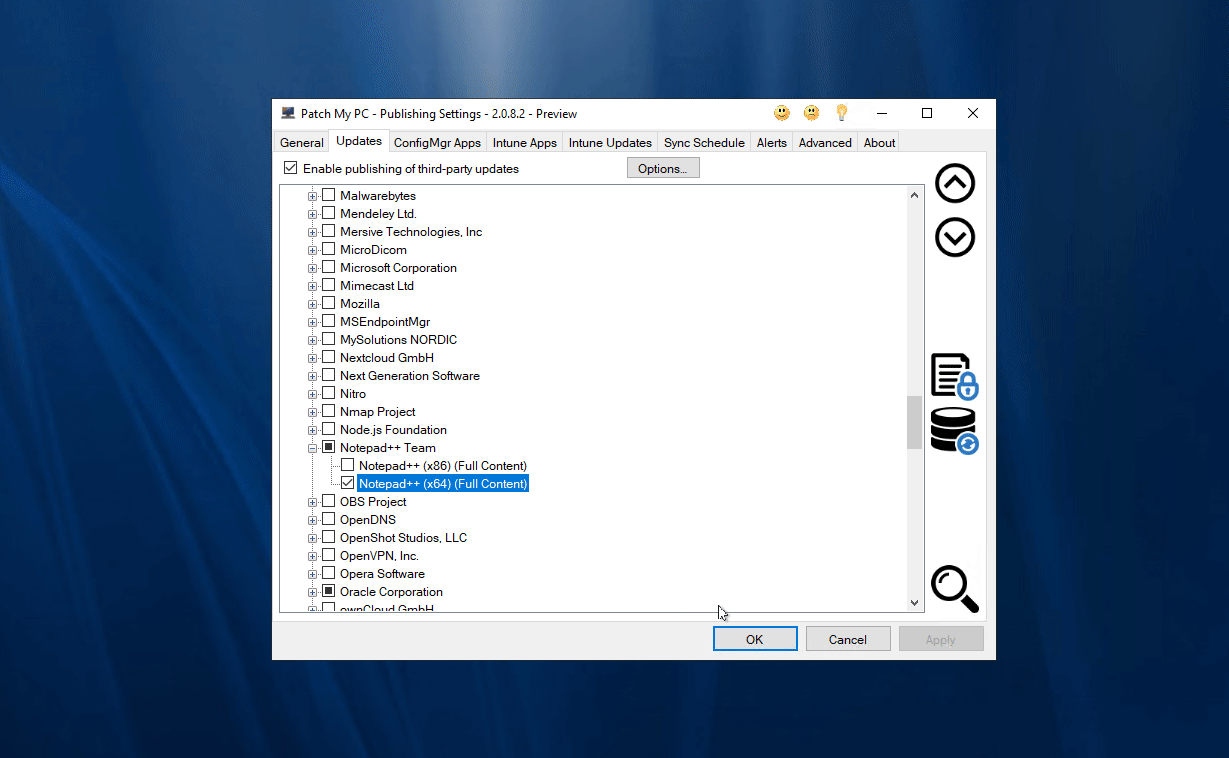
Note: When you double click a product from the ‘Show Package Info’ tool you are querying the latest catalog for applicability rules. When you select an update in the Modify Updates wizard you are viewing the applicability rules for the selected update.
In this wizard, you can review the rules determined to show if an update will be detected as required on a client machine in the IsInstallable Rules section.
For the update Notepad++ 8.1.3 (x64) to show as required, the following registry conditions need to exist:
- HKEY_LOCAL_MACHINE Subkey=”SOFTWARE\Microsoft\WindowsCurrentVersion\Uninstall\Notepad++:DisplayVersion” exis
- HKEY_LOCAL_MACHINE Subkey=”SOFTWARE\Microsoft\WindowsCurrentVersion\Uninstall\Notepad++:DisplayVersion” < “8.1.3.0”
On a client machine, you can then review if the rules would evaluate.

